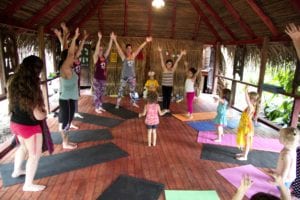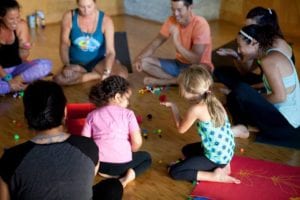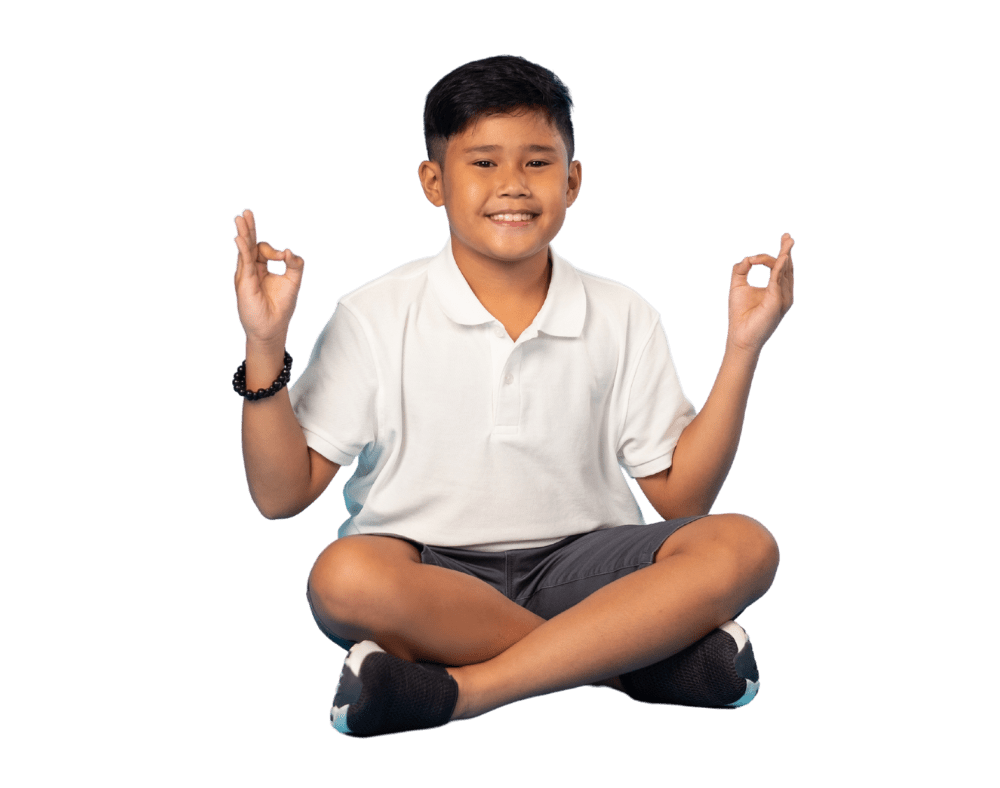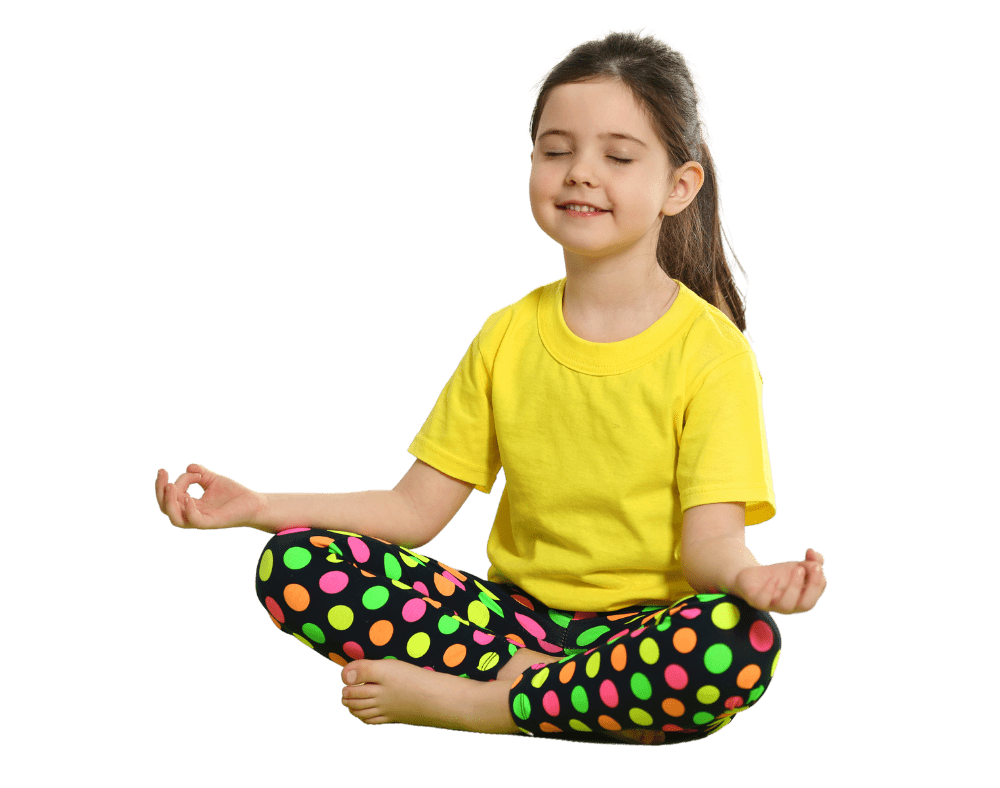
Keep reading to find out what these triggers are and what you can do instead, to not only reduce stress, but create more peace in the minds of our little ones.
1) Stressor: Telling the students how many times to repeat the mantra in meditation. This causes stress because the child will be focused on the counting rather than the meditation. Additionally, if the child doesn’t know how to count, asking them to do so may cause anxiety.
Try Instead: When using a mantra in meditation, such as the Kidding Around Yoga favorite “Peace Begins With Me,” repeat the mantra out loud with the class a few times, whisper it a few times, and then ask them to repeat the mantra in their minds. Here’s the trick though, do not tell them how many times to do it. You can ‘ding’ a nice chime, or simply “OM” gently to bring them out of the meditation. Wait until about half of the class has opened their eyes, or stopped doing the meditation (because you know they will), and then give the signal for the rest of the class to come out of meditation.
2) Stressor: Cueing students to use their “left” and their “right” too often. While it’s important for children to learn their left from their right, many people (adults included) have a hard time distinguishing one side from the other, especially when they have to do so quickly. By asking the students to use a specific side when it’s not important to the task at hand, you may be triggering an anxious response.
Try Instead: Give the cue without telling them which side to do. For example, “Let’s do Warrior 2 everyone.” Then, when it’s time for the other side, simply say, “Now let’s do the other side.”
3) Stressor: Making children close their eyes in the final resting activity. This can apply to any children’s yoga relaxation exercise. In Kidding Around Yoga, we have our Peaceful Garden, which is a lovely child-friendly version of Yoga Nidra. Many kids are afraid of the dark or simply do not feel safe with their eyes closed. By forcing the child to close their eyes, you may be evoking a fear response in them, which is the opposite of what we are trying to achieve.
Try Instead: Give the option to keep the eyes open. Some children also need visual contact with the teacher to understand the auditory cues that are offered. An effective way to create 
4) Stressor: Telling the students you’re going to leave them “alone” while they’re in final relaxation. Sometimes we want to give the children some quiet time to explore their relaxation and visualization, but using the word “alone” can bring about the fear of abandonment.
Try Instead: Say something along the lines of, “I’ll give you a few moments to explore your peaceful garden…” or “Take some time to explore the magical world you have created in your imagination.” This gives the children an opportunity to have a free and unique experience while safely being guided and supported by a teacher.
5) Stressor: Mentioning specific family members when talking about family in class. Sometimes we may ask the students to help out at home as an act of Karma Yoga. It might feel natural to you to say something along the lines of “help your mom with the dishes,” however, this is not the best idea. As a society, we are moving away from gender stereotypes and roles in the household, but that’s for another blog. The main reason I would like to focus on this here, in this blog, is that the child may not HAVE that particular family member in his or her life. If, for example, a child in the class has recently lost or does not have his mother, asking him to help her out at home may trigger feelings that will not benefit him in that moment.
Try Instead: Invite the children to be helpful and do good deeds by “helping someone in their family”, or “someone at home” or even “someone in their life.”

Like what you read here? There’s so much MORE to explore and learn with Kidding Around Yoga. Check out our website for our live and online teacher trainings, Yoga Alliance-approved 95-hour RCYT trainings, specialty online courses, original music, merchandise, and SO MUCH MORE! KAY even offers a 6-hour workshop designed to teach school educators how to bring yoga and meditation right into their classrooms (EduKAY).



